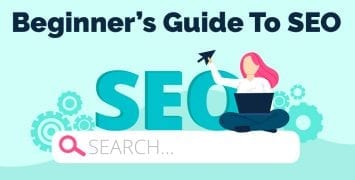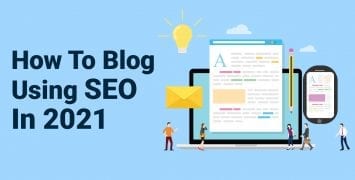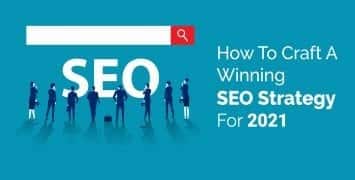Content is important to your site’s success – but content is NOT the only factor.
When visitors land on your webpage, they consider everything. This includes not only the copy but also the entire look of your site. Your site’s color schemes, font selection and other design elements are going to have an influence on visitors.
Connecting with customers requires a careful combination of psychology and site design. Not sure what to do? Don’t worry – my complete guide to improving reader engagement starts right now:
How to Design an Engaging Website
The first rule of design is to not focus too much on design. Now, this does sound a bit strange, so let me explain:
Good-looking, highly stylized sites can have a high bounce rate. Don’t worry about having an “elegant” website.
Instead, you want to focus on functionality. Your site should load fast and be easy to navigate. People shouldn’t have to hunt around for features. Everything about the site should be easily understood without a lot of scrutiny.
How to Pick the Best Colors and Fonts
Don’t get too varied or intricate with your color scheme. You’ll want to use a relatively limited color palette.
Using simple colors helps create a clear brand identity. Think of the brand Target. Did you immediately picture their distinctive red bulls-eye? That’s the power of color in branding.
There’s no one color which will appeal to all audiences. Basically, you just want to choose a palette for your site which reflects your brand’s personality. Generally speaking, darker colors are for more “serious” brands such as financial services. Lighter colors often work better with people and care industries such as health care.
Use Asymmetrical Design
People like orderly design. The best way to convey information is with symmetry. An imbalanced composition overall will be confusing and difficult to navigate. Generally, people spend less time on an asymmetrical website than a symmetrical one.
This doesn’t mean there’s no place for asymmetrical design. You can use asymmetry to highlight one or two important elements on your site. For instance, an asymmetrical design can help draw attention to your Call to Action buttons.
Keep Choices and Forms Limited
People are slow to make a choice when they have a large number of options. So you want to keep options limited on your site. This primarily means two things:
1. Keep your forms short. For instance, if someone want to subscribe to your email, do you really need to know their location or even full name? Not really. While that information would be nice for marketing purposes, a long form is also less likely to not be filled out at all. Only ask for what you need, especially if this a potential customer’s first contact with your brand.
2. Keep your pricing simple. Many brands, especially virtual services, offer multiple subscription plans. The general idea is to never offer more than three options. Too many and customers will feel overwhelmed or that they’re not getting a good deal.
3. Keep your social media share buttons to a minimum. While you want to maintain a presence on all platforms relevant to your brand, most likely one or two platforms will be more popular than the rest. These are the only platforms you want to promote with share buttons at the end of an article.
Create a Personal Connection
Give your brand a face and a voice. First, you want to include information about you (and your staff) directly on your website. People find a brand more trustworthy when they can see and hear from the real people actually providing the product or service.
You’ll also want to give your brand a voice. This a consistent personality you’ll use to communicate through advertising and social media.
The type of voice you want to use depends on the specifics of your business. Health care, financial services and other more serious businesses need a professional tone.
Lighter brands can inject more humor into their voice. Taco Bell’s twitter is often considered a good example here. They’re fun and topical while also remaining controversy-free.
The most effective voice is the one which connects with your customers. Check out The Power of Buyer Personas for a detailed guide on how to identify your audience and then connect with them in a voice they’ll respond to.
The Power of Customer Psychology
“Customer psychology” isn’t a series of hacks which trick potential customers into making a purchase. There are no simple design and word choices which compel people to buy your product when they otherwise wouldn’t.
Instead, the strategies above are more designed to remove a variety of barriers a visitor might face. On the road to a sale, you want to remove as many hurdles as possible.




